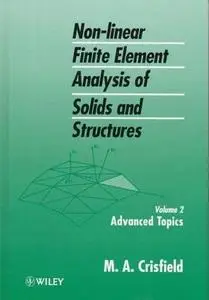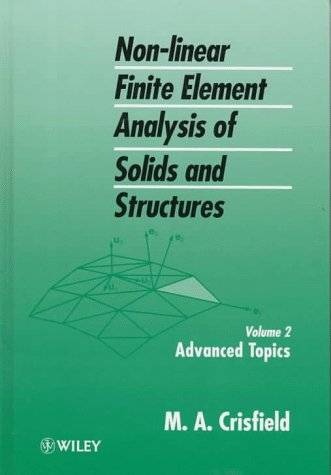M. A. Crisfield
Non-Linear Finite Element Analysis of Solids and Structures, Vol. 2
John Wiley & Sons | ISBN: 047195649X | 1997 | 508 pages | PDF | 24.2 MB
Non-Linear Finite Element Analysis of Solids and Structures, Vol. 2
John Wiley & Sons | ISBN: 047195649X | 1997 | 508 pages | PDF | 24.2 MB
Taking an engineering rather than a mathematical bias, this work brings together concepts behind different branches of work on non-linear finite elements. Practically-oriented, it acknowledges the increasing role of computers in non-linear analysis by including a series of computer applications. Topics include plasticity; beams and rods in two-dimensional framework; shells; hyper-elasticity; rubber; kinematic hardening; yield criteria with volume effects; large rotations; three-dimensional beams and rods; and stability theory. Also examines advanced solution procedures for non-linear analysis such as line searchers, quasi-Newton and acceleration techniques, arc-length methods, automatic increments and re-starts.



